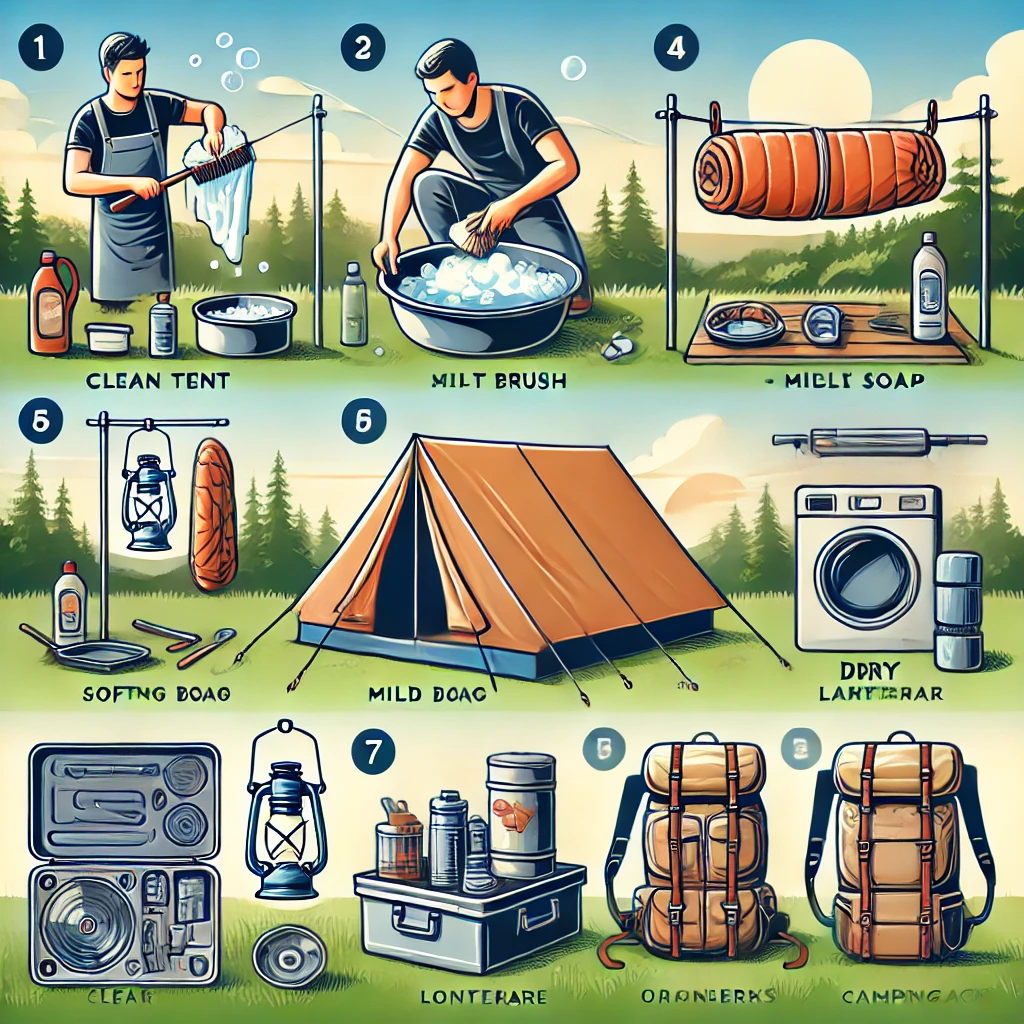
Camping gear can be pretty expensive, right? So keeping it in good shape makes sense for your wallet and for maximizing those outdoor adventures. When you look after your equipment, it doesn’t just last longer—it performs better too.
Take a moment to think about this: you’re all set to set up your tent, only to discover a tear because you didn’t pack it right last time. Real bummer! Well-maintained gear stays reliable, meaning no unpleasant surprises when you’re out in the wild. Whether it’s cooking up a storm on a camp stove or taking shelter from a sudden downpour, clean and functional equipment is crucial.
Your safety out there is paramount. Properly caring for camping items ensures they don’t malfunction and put you at risk. No one wants a leaky tent, a broken burner, or who knows what, while miles away from the nearest help! A bit of TLC for your gear before and after trips goes a long way. Plus, fewer emergency replacements needed, which means more budget for other fun camping activities.
Switching gears from being reactive to proactive with gear care is key. Think of it like prepping for a friend who’s visiting—a quick tidy-up and everything is just more comfortable. Same goes here, giving every piece the attention it deserves before packing it away keeps everything adventure-ready.
Cleaning and Drying: The Cornerstone of Equipment Maintenance
Taking the time to properly clean and dry camping equipment can save headaches down the road. For tents, make sure to shake out any dirt before wiping them down with a damp cloth and mild soap. It’s a breeze compared to dealing with muddy stains later.
Cookware needs some extra love. Give pots and pans a good scrub with eco-friendly soap after every use to keep them gunk-free. Leftover grease or food can really mess with your next meal and attract unwanted critters.
Clothing, boots, and sleeping bags are in direct contact with dirt and sweat, so soap and water are your best buddies here. Proper drying is crucial to avoid mildew, so hang everything out in the sun or a well-ventilated area.
Storing wet gear is a huge no-no. Even a bit of moisture can lead to mold, mildew, and a pretty nasty smell. Not what you want to find next time you pack!
Using natural cleaning products is not just good for the planet but also typically gentler on fabrics and materials. Less harsh chemicals mean your gear stays in top condition longer, so go green where you can.
Storage Strategies to Extend the Life of Your Gear
Stashing camping gear the right way is more than just a tidy habit—it’s a passport to longevity for your gear. If you’ve ever opened your tent bag to find a funky smell or discovered your jacket doesn’t quite look right, improper storage could be the culprit.
Mold and mildew are the arch-nemeses of gear everywhere, and they thrive in dark, damp places. Make sure everything is bone dry before stashing it away. Look for cool, dry spaces that keep the nasties at bay.
Keep things organized by using bins and labels. It’s a game-changer when you need to find stuff in a pinch. Plus, it keeps your space uncluttered. Stackable containers are awesome for making the most of your storage room.
Seasonal checks can do wonders. Going through your gear a few times a year helps catch any wear or damage before it turns into the big drama. It’s all about nipping little issues in the bud.
Inventory lists save time and sanity, especially when packing for trips. Knowing exactly what you have means no more last-minute dashes to the store and more time planning new adventures.
Repair and Replacement Insights for Weary Equipment
Even the best-maintained gear faces wear and tear. Knowing when to repair or replace can save time, money, and frustration. Signs like fabric fraying or zippers that just won’t zip are your cue.
For stuff like small tears or holey fabrics, a DIY patch kit can be super helpful on the go. A strong adhesive and a bit of effort can keep gear running smoothly until a proper fix is in sight.
Duct tape is like magic for quick fixes—a temporary savior for broken poles or minor leakages you don’t want hindering your trip.
When it comes to spare parts, packing extras of commonly breakable items like pole segments, zippers, or stakes is crucial. It lets you tackle problems head-on without cutting your adventure short.
Sometimes, things just reach their expiration point. If repairs keep piling up or compromise safety, it’s replacement time. Investing in new gear can enhance performance and keep your trips safe and fun.
